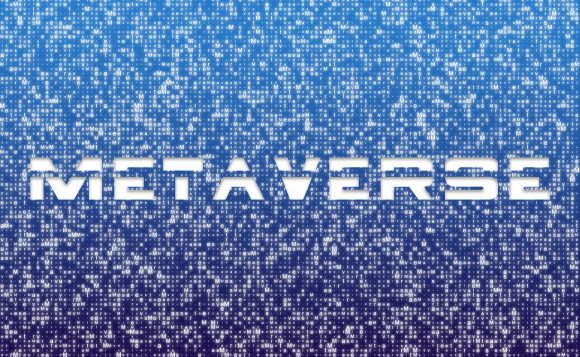
There are a lot of different opinions on what is metaverse and its further development. These opinions differ from skeptical to hopeful, but, anyway, some companies are already considering and building a metaverse strategy. Metaverse, for example, is gradually becoming used for remote work, entertainment, retail, etc.
According to Influencer Marketing Hub, in 2022 the general metaverse market was estimated at more than 47 USD billion. And in 2030, the metaverse market would be estimated at more than 670 USD billion.
In our new selection, we recommend reading articles by consulting centers and digital technology experts that explain metaverse meaning, share some interesting facts about the technology, and predict its development.
Beyond the hype: what businesses can really expect from the metaverse in 2023 (PricewaterhouseCoopers)
In this detailed article, the PricewaterhouseCoopers authors collected six main predictions about metaverse development.
According to experts, businesses will be one of the main metaverse users. 80% of company executives said they planned to integrate a metaverse strategy into their businesses. Moreover, with the technology implementation, there will be new metaverse-related duties. Companies will also hire new employees like 3D artists, designers, and 3D modelers.
As PwC specialists predict, metaverse will gain or lose popularity, depending on how virtual network users will follow privacy rules and how many leaks and scams will be committed. Extended reality and artificial intelligence will also influence metaverse development.
In every article segment, you can read some useful recommendations for enterprises that already use metaverse and related technologies.
Building a Responsible Metaverse (Paul Daugherty, Denise Zheng, Accenture)
A research report by Accenture executives Paul Daugherty and Denise Zheng describes how you can develop your own responsible metaverse.
Daugherty and Zheng highlight three key factors that influence customers’ willingness to join the metaverse: safety, security, and privacy. 55% of respondents say the metaverse will secure personal data on the same level as social media.
The authors explain the metaverse should be responsible and built on experiences of making mistakes and overcoming existing challenges.
Then, Daugherty and Zheng give companies recommendations on how to build their own metaverse:
- designate a leader responsible for metaverse development
- create a handbook that will contain the main rules and principles of responsible metaverse use
- define challenges and issues related to the technology
How the Metaverse Could Change Work (Mark Purdy, Harvard Business Review)
In the Harvard Business Review article, Mark Purdy, independent economics and technology advisor, describes how the metaverse can change the working process.
Primarily, the metaverse influences remote work. Instead of videoconferences, you can put your employees in an immersive virtual space, where they will communicate with each other, using digital avatars.
The article’s author interviewed Founder-Director NextMeet Rushpak Kypuram about the company’s virtual office and the main characteristics and advantages of remote work in the metaverse.
How the Metaverse Could Change Work (Mark Purdy, Harvard Business Review)
In the Harvard Business Review article, Mark Purdy, independent economics and technology advisor, describes how the metaverse can change the working process.
Primarily, the metaverse influences remote work. Instead of videoconferences, you can put your employees in an immersive virtual space, where they will communicate with each other, using digital avatars.
The article’s author interviewed Founder-Director NextMeet Rushpak Kypuram about the company’s virtual office and the main characteristics and advantages of remote work in the metaverse.
Value creation in the metaverse (McKinsey Digital)
A research report by McKinsey Digital describes the metaverse in detail, its importance, and the future and the profit the technology already brings to companies.
On the web page, you can download the full version of the report in PDF. The page also contains statistics, videos, and information segments from the PDF file.
The full report has a detailed definition of the metaverse, the directions of the metaverse investment, and how customers change their behavior and acknowledge modern technologies in their modern life.
As experts predict, the metaverse market will be estimated at 5 USD trillion by 2030. It could be the biggest market growth in a few business fields, including retail, healthcare, manufacturing, and package goods delivery.
In addition, 95% of company executives are sure the metaverse will positively influence their business in 10 years. Today, 60% of internet users are aware of the metaverse and its main activities.
The Metaverse in 2040 (Pew Research Centre)
The Pew Research Centre article by Janna Anderson highlights the key predictions of the metaverse development up to 2040.
According to the statistics in the article, 54% of experts think the metaverse will be fully immersive, more detailed, and will become a part of life, for at least, half-billion people or more worldwide in about twenty years.
But the other 40% of specialists claim the metaverse will have failed to become a key part of people’s life by 2040. There are opinions that, in almost twenty years, people will use augmented and mixed reality more often than the metaverse.
What Is a Metaverse? And Should You Be Buying In? (Jackie Wiles, Gartner)
The article by Jackie Wiles, Gartner’s content marketing director, explains what a metaverse is and whether you should invest in the technology at all.
In the beginning, the author clarifies the general metaverse concept — a virtual space, where people interact with each other with digital avatars. Wiles also presents Gartner’s statistics, claiming that, in 2026, a quarter of humankind will spend, at least, an hour in the metaverse.
Then, the author highlights the key innovations, that will make the metaverse trend:
- Web3;
- spatial computing, which provides transferring experience between virtual and physical worlds;
- digital twin of a user;
- digital twins of customers, that can represent a single person, a group of people, or even machines.
The metaverse is inevitable, regardless of what happens to Meta (Louis Rosenberg, Big Think)
Another article about metaverse by Louis Rosenberg, CEO and Chief scientist of Unanonimous AI, was published on Big Think. The article highlights the fact the metaverse still has potential and chance for development, not depending on whether Meta will succeed in the development and the launch of the technology.
Rosenberg shares his own experience of visiting the Metaverse summit, where experts were talking about the technology as a part of NFT, blockchains, and Web3 Native strategies.
Rosenberg thinks the metaverse shouldn’t be defined by digital marketing strategies and companies only. In his opinion, a metaverse is a place that transforms the way how people perceive digital content. Instead of watching digital space from a device screen, a human themselves can be a part of this virtual world.


